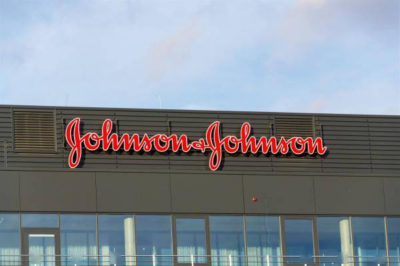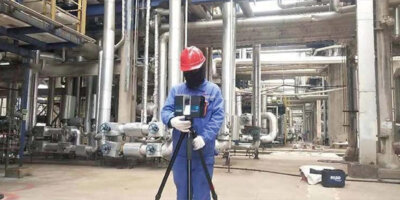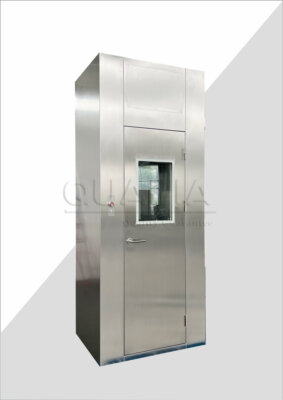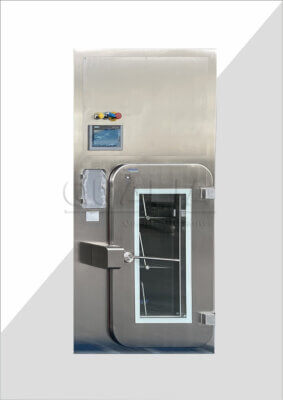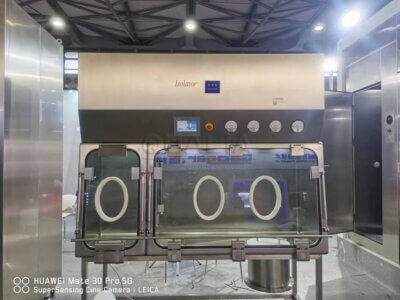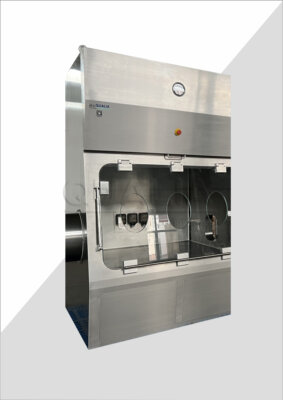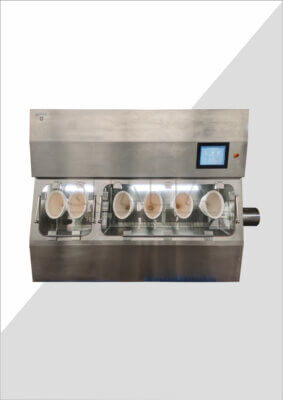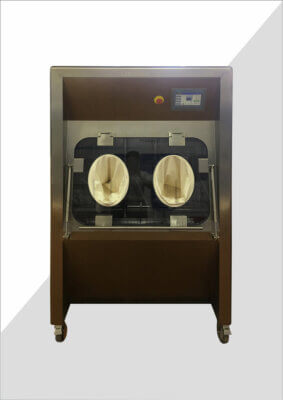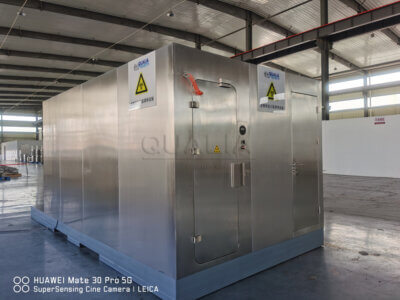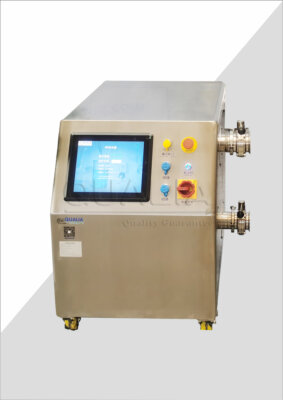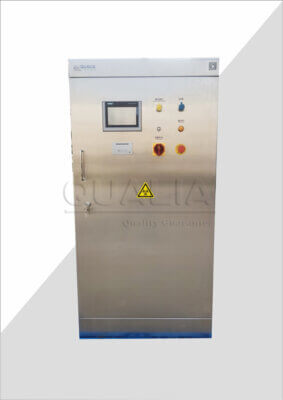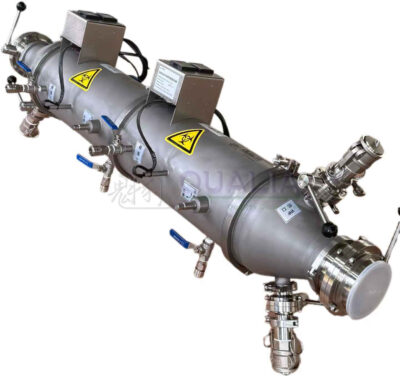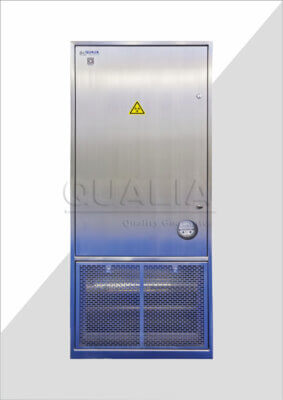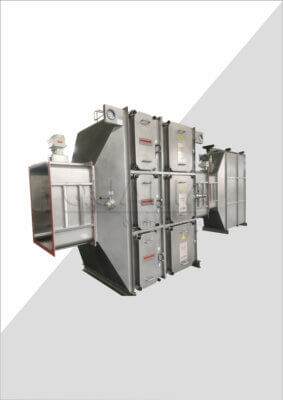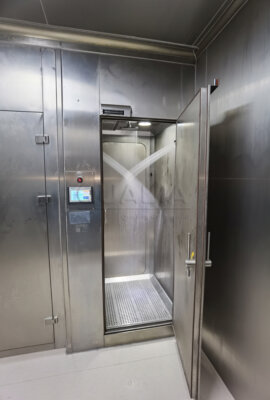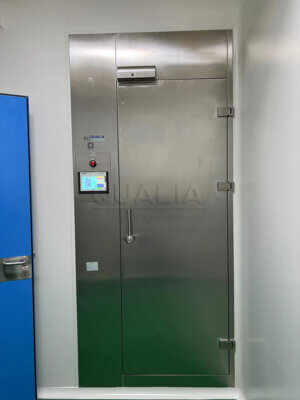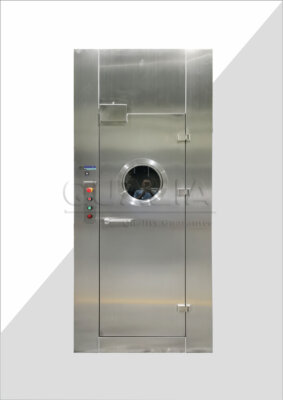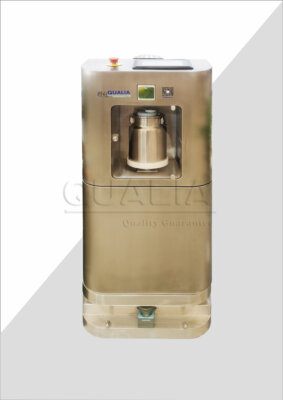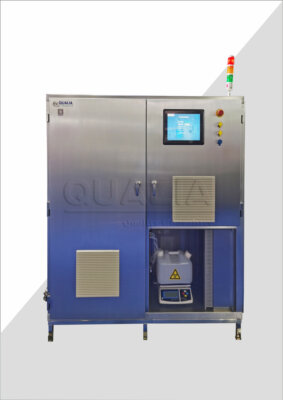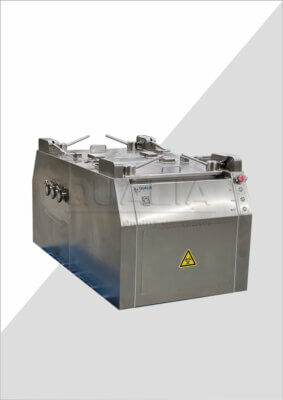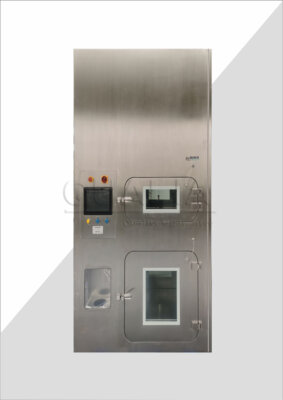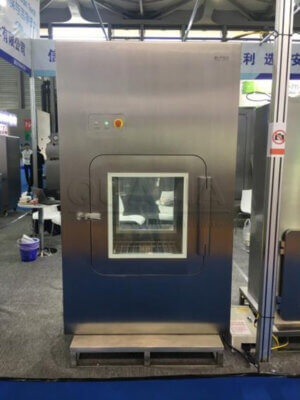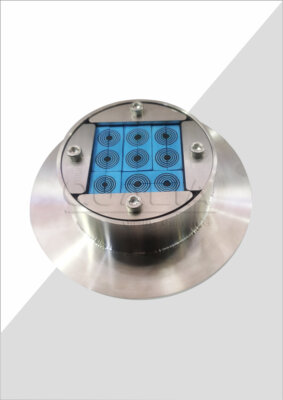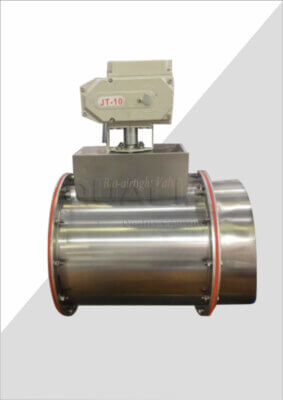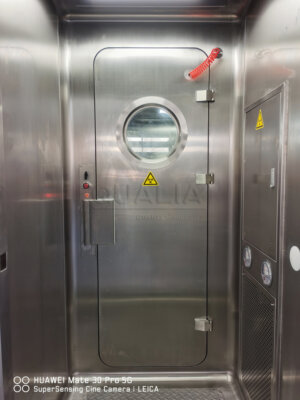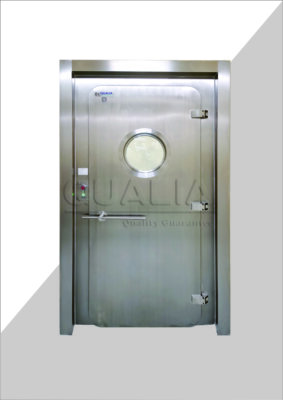APR door sealing systems represent a significant advancement in industrial door technology, utilizing pneumatic pressure to create superior environmental barriers. These systems employ compressed air to inflate specialized sealing gaskets that form tight, consistent seals around door perimeters, effectively preventing air infiltration and contamination transfer between controlled environments.
Core Components and Design Principles
The fundamental architecture of APR door sealing systems centers on inflatable gaskets integrated into door frames and panels. These gaskets connect to precision-controlled pneumatic systems that regulate air pressure to maintain optimal sealing performance across varying environmental conditions. The design typically includes pressure sensors, control valves, and monitoring systems that ensure consistent seal integrity.
Key components include high-grade elastomeric sealing materials resistant to chemical degradation and temperature fluctuations. The pneumatic control system features redundant pressure sources and fail-safe mechanisms that maintain sealing effectiveness even during power interruptions. Advanced systems incorporate real-time monitoring capabilities that alert operators to pressure variations or seal degradation before performance compromises occur.
| Component | Function | Performance Benefit |
|---|---|---|
| Inflatable Gaskets | Primary sealing barrier | 95-99% air leakage reduction |
| Pressure Control System | Maintains optimal seal pressure | Consistent performance across conditions |
| Monitoring Interface | Real-time seal status | Predictive maintenance capabilities |
| Backup Systems | Failsafe operation | Continuous protection during emergencies |
Pneumatic vs. Traditional Sealing Methods
Traditional door sealing relies on mechanical compression and static gaskets that degrade over time and provide inconsistent performance. Pneumatic sealing technology offers dynamic pressure adjustment that compensates for door movement, temperature changes, and wear patterns. This adaptability results in superior long-term sealing performance compared to conventional methods.
Research conducted by the International Cleanroom Association demonstrates that pneumatic sealing systems achieve 85% better contamination prevention compared to standard mechanical seals. The dynamic nature of pneumatic systems allows for pressure adjustments that maintain optimal sealing force regardless of door position or environmental conditions.
How Does Pneumatic Sealing Technology Work?
The operational principles of pneumatic sealing technology revolve around controlled air pressure application to create and maintain effective environmental barriers. When doors close, the pneumatic system activates, inflating gaskets to predetermined pressure levels that ensure proper seal contact without excessive force that could damage door mechanisms.
Air Pressure Mechanics and Control Systems
Modern APR systems utilize sophisticated pressure control algorithms that optimize sealing performance while minimizing energy consumption. The control system continuously monitors seal pressure, door position, and environmental conditions to adjust pneumatic pressure accordingly. Typical operating pressures range from 2-15 PSI, depending on application requirements and environmental differential pressures.
The pneumatic control system employs precision regulators and flow control valves that respond to pressure variations within milliseconds. This rapid response capability ensures consistent sealing performance during door operation cycles and environmental fluctuations. Advanced systems incorporate learning algorithms that adapt to facility-specific conditions and usage patterns.
In our experience working with pharmaceutical facilities, properly calibrated pneumatic systems reduce air infiltration by 92-98% compared to traditional sealing methods. The ability to adjust pressure based on real-time conditions provides unprecedented control over environmental containment.
Sealing Performance Under Different Conditions
APR door system performance varies significantly across different operational environments and conditions. Temperature fluctuations, humidity changes, and pressure differentials all impact sealing effectiveness. Pneumatic systems compensate for these variables through dynamic pressure adjustment and material selection optimized for specific environmental ranges.
Performance testing reveals that pneumatic sealing systems maintain 95% of their initial sealing capacity after 500,000 operational cycles, compared to 60-70% retention for traditional mechanical seals. This superior durability translates into reduced maintenance requirements and extended service life.
| Environmental Factor | Impact on Traditional Seals | Pneumatic System Response |
|---|---|---|
| Temperature Variation | 15-25% performance loss | <5% performance variation |
| Humidity Changes | Material degradation | Minimal impact |
| Pressure Differentials | Seal deformation | Automatic pressure compensation |
What Are the Key Benefits of APR Door Systems?
The implementation of APR sealing solutions delivers measurable improvements across multiple operational parameters. Primary benefits include enhanced contamination control, improved energy efficiency, and reduced maintenance requirements. These advantages translate into significant cost savings and operational improvements for industrial facilities.
Contamination Control and Cleanroom Applications
Contamination prevention represents the most critical benefit of advanced pneumatic sealing technology. Industrial sealing systems utilizing pneumatic technology achieve contamination reduction rates exceeding 99% in controlled environments. This performance level meets or exceeds requirements for ISO Class 5 cleanrooms and FDA-regulated manufacturing environments.
Case studies from pharmaceutical manufacturing facilities demonstrate dramatic improvements in contamination control following APR system implementation. One major biopharmaceutical company reported a 94% reduction in contamination incidents after upgrading to pneumatic sealing systems, resulting in $2.8 million annual savings from reduced product losses and regulatory compliance costs.
The dynamic sealing capability prevents particle migration between environments while maintaining stable pressure differentials essential for cleanroom operation. This consistent performance eliminates the contamination risks associated with traditional sealing methods that degrade over time.
Energy Efficiency and Operational Cost Savings
Energy efficiency improvements represent another significant advantage of APR door sealing systems. By virtually eliminating air infiltration, these systems dramatically reduce HVAC loads required to maintain environmental conditions. Facilities typically experience 20-35% reductions in heating and cooling costs following pneumatic sealing system installation.
The QUALIA Bio-Tech analysis of energy consumption data from multiple installations shows average energy savings of 28% for pharmaceutical facilities and 32% for food processing plants. These savings result from reduced air handling requirements and improved temperature stability in controlled environments.
While initial investment costs for pneumatic systems exceed traditional sealing methods by 40-60%, the operational savings typically provide return on investment within 18-24 months. Long-term operational benefits include reduced maintenance costs, extended equipment life, and improved process consistency.
What Industries Benefit Most from APR Sealing Solutions?
Multiple industries benefit from pneumatic door technology, with pharmaceutical, biotechnology, and food processing sectors showing the highest adoption rates. These industries require stringent environmental controls and contamination prevention that traditional sealing methods cannot reliably provide.
Pharmaceutical and Biotechnology Applications
Pharmaceutical manufacturing demands the highest levels of environmental control and contamination prevention. APR door sealing systems provide the reliability and performance required for Good Manufacturing Practice (GMP) compliance and FDA validation. The ability to maintain consistent environmental separation makes these systems essential for sterile manufacturing operations.
According to industry research by the Pharmaceutical Research and Manufacturers Association, facilities utilizing advanced pneumatic sealing systems experience 78% fewer contamination-related production delays. The consistent performance and monitoring capabilities of APR systems support regulatory compliance while reducing validation complexity.
Biotechnology facilities particularly benefit from the precise environmental control enabled by pneumatic sealing technology. Cell culture operations and biological manufacturing processes require stable environmental conditions that traditional sealing methods cannot consistently maintain.
Food Processing and Manufacturing Environments
Food processing facilities face unique challenges combining contamination prevention with frequent cleaning and sanitization requirements. Industrial sealing systems with pneumatic technology provide chemical resistance and cleanability required for food safety compliance while maintaining superior sealing performance.
A major food processing company implemented pneumatic sealing solutions across their facility and reported a 67% reduction in environmental contamination incidents. The improved contamination control supported HACCP compliance while reducing product waste by 23%.
The robust construction and chemical resistance of pneumatic sealing systems withstand harsh cleaning chemicals and high-pressure washing procedures common in food processing environments. This durability reduces replacement frequency and maintenance costs compared to traditional sealing methods.
How to Select the Right APR Door System for Your Facility?
Selecting appropriate APR door sealing systems requires careful evaluation of facility requirements, environmental conditions, and operational parameters. Key considerations include pressure differential requirements, door size and configuration, environmental conditions, and integration with existing building systems.
Technical Specifications and Performance Requirements
Performance specifications must align with facility environmental requirements and regulatory standards. Critical parameters include sealing pressure ranges, response times, and environmental compatibility. Most industrial applications require systems capable of maintaining pressure differentials between 0.02-0.5 inches of water column while accommodating door movements and building settling.
The pneumatic system capacity must accommodate door size, sealing perimeter length, and operational frequency. Larger doors require proportionally higher air volume and pressure regulation capability. Systems should include redundant pressure sources and emergency backup capabilities for critical applications.
| Application Type | Pressure Range (PSI) | Response Time (seconds) | Environmental Rating |
|---|---|---|---|
| Pharmaceutical Cleanroom | 3-8 | <2 | ISO Class 5-8 |
| Food Processing | 2-6 | <3 | FDA/USDA Compliant |
| Biotechnology | 4-10 | <1.5 | GMP Validated |
| General Industrial | 2-5 | <5 | Standard Industrial |
Installation and Maintenance Considerations
Installation complexity varies significantly based on door configuration and facility infrastructure. New construction projects offer optimal integration opportunities, while retrofit applications may require modifications to existing door frames and electrical systems. Professional installation ensures proper system calibration and optimal performance.
Maintenance requirements for pneumatic sealing technology include regular pressure system inspections, gasket condition monitoring, and control system calibration. Properly maintained systems provide 10-15 years of reliable service with minimal performance degradation. Preventive maintenance programs reduce unexpected failures and extend system life.
As noted by industry experts, “The key to successful APR system implementation lies in proper sizing, installation, and ongoing maintenance. Facilities that invest in comprehensive maintenance programs achieve significantly better long-term performance and cost savings.”
What Are the Current Limitations and Future Developments?
While APR sealing solutions offer significant advantages, certain limitations and considerations must be addressed. Understanding these factors enables informed decision-making and realistic performance expectations.
Technical Challenges and Cost Considerations
Initial investment costs represent the primary barrier to APR system adoption. Complete systems typically cost 40-80% more than traditional sealing methods, though operational savings usually justify the investment within 2-3 years. Smaller facilities may struggle to achieve cost-effective implementation due to fixed system costs.
Technical complexity requires skilled installation and maintenance personnel familiar with pneumatic systems. The specialized nature of these systems may limit service availability in some geographic areas. Additionally, compressed air requirements necessitate reliable air supply systems that may require facility infrastructure upgrades.
Power dependency represents another consideration, as pneumatic systems require electrical power for control and monitoring functions. While backup systems provide emergency operation, extended power outages can compromise sealing performance without adequate backup power systems.
Emerging Technologies and Industry Trends
Future developments in pneumatic door technology focus on enhanced automation, predictive maintenance capabilities, and improved energy efficiency. Smart sensor integration enables real-time performance monitoring and automated adjustment based on environmental conditions and usage patterns.
Advanced materials research continues developing improved gasket materials with enhanced chemical resistance, durability, and sealing performance. These developments promise extended service life and reduced maintenance requirements for next-generation systems.
Industry trends indicate increasing adoption of integrated sealing systems that combine pneumatic technology with building automation systems. This integration enables comprehensive facility environmental management and optimized energy consumption.
Conclusion
APR door sealing systems represent a transformative advancement in industrial environmental control technology. The superior contamination prevention, energy efficiency, and long-term cost savings make these systems essential for facilities requiring stringent environmental controls. Key benefits include 95-99% contamination reduction, 20-35% energy savings, and extended operational life compared to traditional sealing methods.
The pneumatic technology underlying these systems provides dynamic sealing capabilities that adapt to changing conditions while maintaining consistent performance. Industries such as pharmaceutical manufacturing, biotechnology, and food processing achieve significant operational improvements through APR sealing solutions implementation.
While initial investment costs exceed traditional alternatives, the comprehensive benefits and rapid return on investment make pneumatic sealing systems increasingly attractive for facilities prioritizing environmental control and operational efficiency. As technology continues advancing, these systems will likely become standard practice for controlled environment applications.
Looking ahead, the integration of smart monitoring, predictive maintenance, and building automation systems will further enhance the value proposition of pneumatic sealing technology. Facilities planning environmental control upgrades should seriously consider advanced pneumatic sealing systems as a strategic investment in operational excellence and regulatory compliance.
What specific environmental control challenges is your facility currently facing, and how might advanced pneumatic sealing technology address these concerns while supporting your long-term operational goals?
Frequently Asked Questions
Q: What are APR Door Sealing Systems and how do pneumatic technology enhance their function?
A: APR Door Sealing Systems incorporate pneumatic technology by using inflatable seals around the doorframe that inflate with compressed air when the door closes. This inflation creates a highly airtight barrier, preventing air leakage even under pressure differences. Pneumatic seals improve containment, especially in environments requiring strict air control like cleanrooms and biohazard labs, by inflating to tightly compress the door against the frame, ensuring superior sealing compared to traditional mechanical seals.
Q: Why choose pneumatic seal APR doors over mechanical seal doors?
A: Pneumatic seal APR doors provide a flush threshold with the floor, eliminating tripping hazards common in mechanical seal doors that have raised thresholds. Additionally, pneumatic seals inflate quickly to form a highly airtight barrier, maintaining seal integrity in high-traffic areas or where wheeled equipment passes frequently. They also allow for automatic inflation and deflation control, emergency deflation valves for safety, and better adaptability to varying pressure conditions, making them ideal for critical containment environments.
Q: How do pneumatic APR Door Sealing Systems ensure safety during power outages?
A: Pneumatic APR Door Sealing Systems include emergency deflation valves on both sides of the door. In case of power failure, these valves can be manually rotated to release the compressed air from the seal, allowing quick door opening for safe personnel escape. This safety feature ensures that even with no electrical power, users can exit safely without compromising the integrity of the sealing system under normal conditions.
Q: In what types of facilities are APR Door Sealing Systems with pneumatic technology most commonly used?
A: These systems are predominantly used in high-containment facilities such as BSL3 and BSL4 biohazard laboratories, pharmaceutical manufacturing cleanrooms, medical cleanrooms, and other controlled environments. Their airtight sealing capabilities are crucial to prevent contamination during decontamination, fumigation, or sterile manufacturing processes, especially in areas with heavy foot traffic, wheeled carts, or large animals.
Q: What materials and design features contribute to the durability and functionality of pneumatic seal APR doors?
A: Pneumatic seal APR doors are typically constructed from robust materials like polished stainless steel, powder-coated low carbon steel, aluminum, or phenolic resin. The doorframes and leaves are made with thick gauge steel for strength and flatness, while the inflatable seal itself is made from high-density EPDM rubber for durability and flexibility. Additionally, full welding construction and precise manufacturing tolerances ensure a flat, smooth surface, optimal sealing performance, and long-lasting durability under demanding conditions.
Q: How does the inflation and deflation process work in pneumatic APR Door Sealing Systems?
A: When the door closes, compressed air inflates the seal strip in about 5 seconds, causing it to expand and press firmly against the doorframe, creating an airtight barrier. When opening, the seal deflates within 5 seconds and retracts into its groove, allowing the door to swing freely. This quick inflation and deflation cycle ensures efficient sealing during door closure while facilitating smooth operation and reducing wear on the sealing components.
External Resources
- Inflatable Seal APR Door HC-ISD – PBSC Inc – An English-language overview of PBSC’s APR Door featuring pneumatic inflatable seal technology designed for high containment, including design details, sealing performance, applications, and maintenance.
- ERIKS – Cefil’air® Pneumatic Seals Technology Overview (PDF) – Detailed technical brochure in English describing pneumatic sealing systems, their construction, and operating principles, relevant for understanding pneumatic door seal technology.
- Drop Everything: Basics of High-Performance Drop Seals from athmer – An informational article on advanced door sealing solutions with pneumatic technology aspects, including deployment techniques and benefits for controlled environments.
- How to Seal Door in 7 Easy Steps – EPB – Step-by-step guide in English for door sealing, including technology overview, techniques, and benefits of advanced door sealing systems.
- Air Sealing Doors Adjacent to Unconditioned Space – PNNL – Resource describing air sealing practices for doors, highlighting methods and materials suitable for controlling air exchange through doorways.
- Understanding Door Seals: Selection and Installation (Archtoolbox) – English-language guide on the design and engineering of door sealing systems, including a section on pneumatic technology as applied to modern door seals.
Related Contents:
- What Are APR Door Pneumatic Seals and How They Work
- Pneumatic Seal APR Doors: Complete Guide to Industrial Applications
- Pneumatic vs. Electric Bio-safety Isolation Dampers
- Advanced Sealing Technologies Expert Insights
- How to Install a Bio-safety Isolation Damper: 7 Steps
- Essential BIBO System Maintenance Checklist
- What is the Lifespan of a Bio-safety Isolation Damper?
- BSL-3 Airlocks: Door Specs for Lab Security
- Revolutionizing Door Technology: QUALIA’s Pneumatic Seal APR Doors

